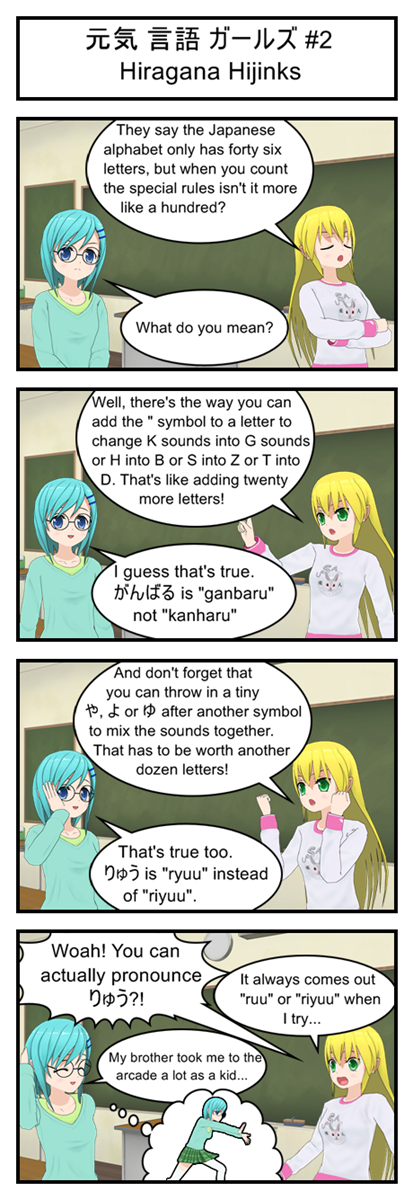
Other special rules you should know:
- Adding a small circle to an “H” symbol turns it into a “P” symbol. Ex: は= ha, but ぱ= pa
- If you follow a symbol up with a vowel that has the same sound, you double the length of the the first symbol and ignore the vowel. Ex: かあ is “kaa” not “ka (pause) a”
- You can also double “O” sounds by using the う symbol instead of the お symbol. Ex: おう is pronounced as a long “oh” sound, not “oh-ew”
Transcript
Yellow: They say the Japanese alphabet only has forty six letters, but when you count the special rules isn’t it more like a hundred?
Blue: What do you mean?
Yellow: Well, there’s the way you can add the ” symbol to a letter to change K sounds into G sounds or H into B or S into Z or T into D. That’s like adding twenty more letters!
Blue: I guess that’s true. がんばる is “ganbaru” not “kanharu”
Yellow: And don’t forget that you can throw in a tiny や, よ, or ゆ after another symbol to mix the sounds together. That has to be worth another dozen letters!
Blue: That’s true too. りゅう is “ryuu” instead of “riyuu”.
Yellow: Woah! You can actually pronounce りゅう?!
Yellow: It always comes out “ruu” or “riyuu” when I try…
Blue: My brother took me to the arcade a lot as a kid…